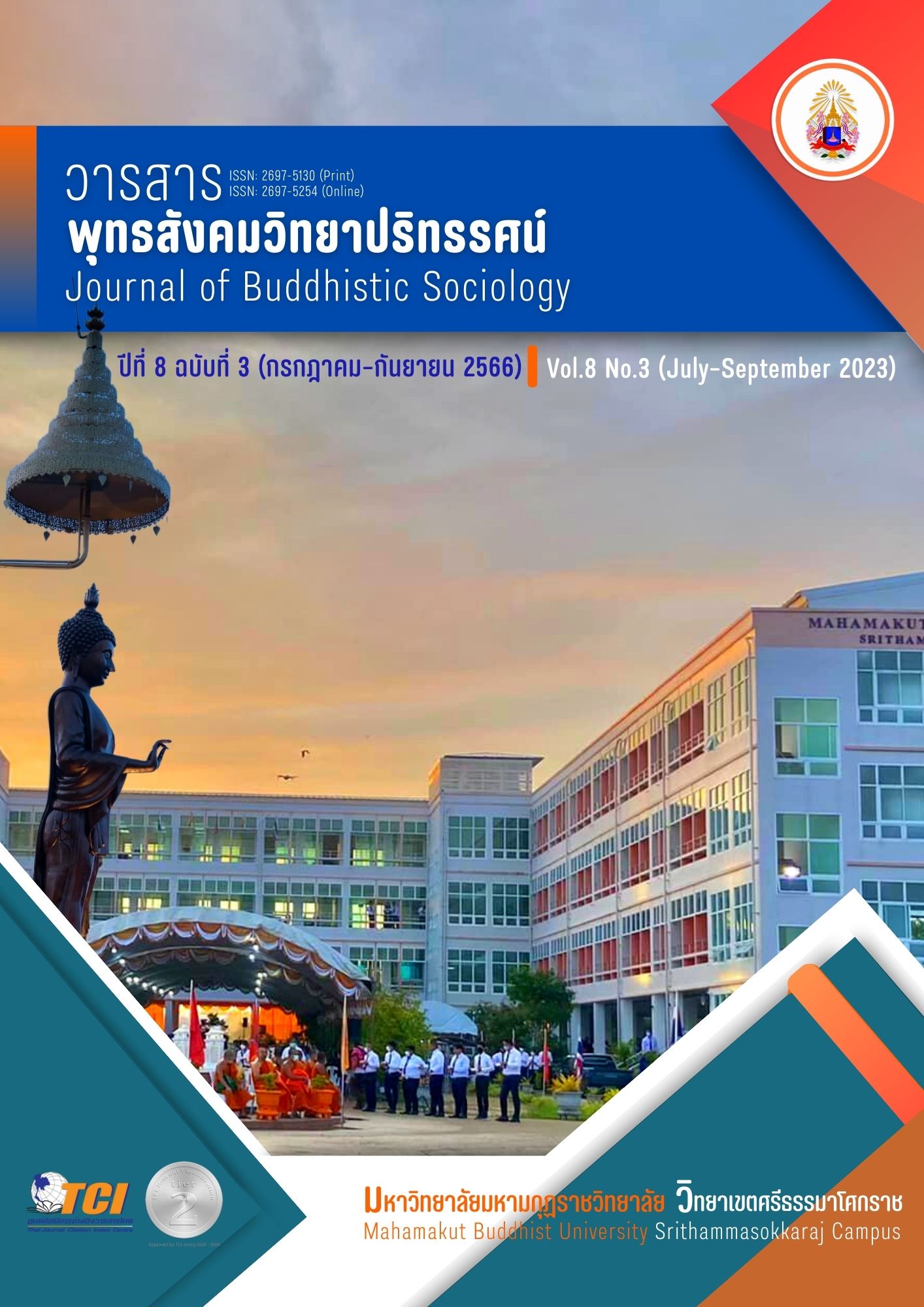AN EVALUATION OF MORAL AND ETHICS PROJECT ACCORDING TO SAMAKKHEE ANUSON SURATTHANI PRIMARY EDUCATIONAL SERVICE AREA OFFICE 3 WITH CIPP MODEL
Main Article Content
Abstract
The evaluation of this project was to assess the outcome of enhancing students’ morality and ethics by way of Samakkhee Anusorn School under the Surat Thani Primary Educational Service Area Office 3 with the CIPP Model. The objectives were to assess: 1) environment, 2) inputs, 3) process, and 4) outputs. The sample group in this project assessment comprised 165 students, 14 teachers, 165 parents, and 13 primary education committees, 358 persons in total. The Krejcie & Morgan Table and Stratified Random Sample determined the sample size. The project assessment tool consisted of questionnaires. Statistics used in project evaluation were the Index of item objective congruence, Alpha Coefficient, frequency, percentage, mean, and standard deviation.
The research showed that:
1. Overall, the environment before implementing the project to enhance the students’ morality and ethics by way of Samakkhee Anusorn of Samakkhee Anusorn School under the Suratthani Primary Education Service Area Office 3 with CIPP Model as a whole was at the highest level.
2. Overall, inputs before implementing the project to enhance the students’ morality and ethics by way of Samakkhee Anusorn of Samakkhee Anusorn School under the Suratthani Primary Education Service Area Office 3 with CIPP Model as a whole was at the highest level.
3. Overall, the process while implementing the project to enhance the students’ morality and ethics by way of Samakkhee Anusorn of Samakkhee Anusorn School under the Suratthani Primary Education Service Area Office 3 with CIPP Model as a whole was at the highest level.
4. Overall, the outputs of the project to enhance the students’ morality and ethics by way of Samakkhee Anusorn of Samakkhee Anusorn School under the Suratthani Primary Education Service Area Office 3 with CIPP Model as a whole was at the highest level.
Article Details

This work is licensed under a Creative Commons Attribution-NonCommercial-NoDerivatives 4.0 International License.
References
กระทรวงศึกษาธิการ. (2551). หลักสูตรแกนกลางการศึกษาขั้นพื้นฐาน พุทธศักราช 2551. กรุงเทพมหานคร: โรงพิมพ์ชุมนุมสหกรณ์การเกษตรแห่งประเทศไทย.
______. (2559). แผนพัฒนาการศึกษาของกระทรวงศึกษาธิการ ฉบับที่ 12 (พ.ศ. 2560-2564). กรุงเทพมหานคร: สำนักนโยบายและยุทธศาสตร์ สำนักงานปลัดกระทรวงศึกษาธิการ.
ฐกฤต อัชณาพิพัฒ. (2560). การประเมินโครงการส่งเสริมคุณธรรมจริยธรรม โรงเรียนบ้านนาวง สำนักงานเขต พื้นที่การศึกษาประถมศึกษาพัทลุง เขต 1. เรียกใช้เมื่อ 23 กรกฎาคม 2565 จาก http://www.kroobannok.com/
ธีรัตม์ ใจกล้า. (2560). รายงานการประเมินโครงการโรงเรียนส่งเสริมคุณธรรมจริยธรรม โรงเรียนบ้านตระ เปียงเดีย สังกัดสานักงานเขตพื้นที่การศึกษาประถมศึกษา สุรินทร์ เขต 1. เรียกใช้เมื่อ 23 กรกฎาคม 2565 จาก http://www.kroobannok.com/board_view.php?b_id=7784&bcat_id=16
นิศากร ยมหา. (2559). รายงานการประเมินผลโครงการพัฒนาคุณธรรมจริยธรรมนักเรียน โรงเรียนมกุฎเมืองราชวิทยาลัย สำนักงานเขตพื้นที่การศึกษามัธยมศึกษา เขต 18. ชลบุรี: โรงเรียนมกุฎเมืองราชวิทยาลัย.
ยุพิน รอดประพันธ์. (2561). การประเมินโครงการโรงเรียนคุณธรรมโดยประยุกต์ใช้รูปแบบการประเมินซิป (CIPP Model) โรงเรียนวัดห้วยธารทหาร สำนักงานเขตพื้นที่การศึกษาประถมศึกษานครสวรรค์ เขต 3. นครสวรรค์: โรงเรียนวัดห้วยธารทหาร.
วรัชยา ประจำ. (2563). การประเมินโครงการส่งเสริมคุณธรรมจริยธรรมนักเรียนในโรงเรียนคุณธรรม สพฐ. โรงเรียนอนุบาลห้วยทับทัน โดยใช้ CIPP Model. วารสารวิชาการมหาวิทยาลัยราชภัฏศรีสะเกษ, 15(3), 102-123.
สำนักงานคณะกรรมการพัฒนาเศรษฐกิจและสังคมแห่งช่าติ. (2559). สรุปสาระสำคัญแผนพัฒนาเศรษฐกิจและสังคมแห่งชาติ ฉบับที่สิบสอง พ.ศ. 2560-2564. กรุงเทพมหานคร: คณะกรรมการพัฒนาเศรษฐกิจและสังคมแห่งช่าติ สำนักนายกรัฐมนตรี.
สุนีรัตน์ จันทร์รัก. (2565). แบบจำลองการประเมินผลตาม CIPP Model. เรียกใช้เมื่อ 25 กรกฎาคม 2565 จาก https://www.gotoknow.org/posts/453748
สุรางค์รัตน์ ตรีเหรา. (2558). การประเมินโครงการพัฒนาคุณธรรมจริยธรรมของนักเรียนตามแนวทางโรงเรียน วิถีพุทธ โรงเรียนบ้านกุดฝั่งแดง. กาฬสินธุ์: โรงเรียนบ้านกุดฝั่งแดง.
Krejcie, R. V. & Morgan, D. W. (1970). Determining Sample Size for Research Scillities. Education and Phychological Measurement, 30(3), 607-610.
Stufflebeam, D.L. & Shinkfield, A.L. (1983). Systematic Evaluation. Boston/Lancaster: Kluwer-Nijhoff Publishing.


